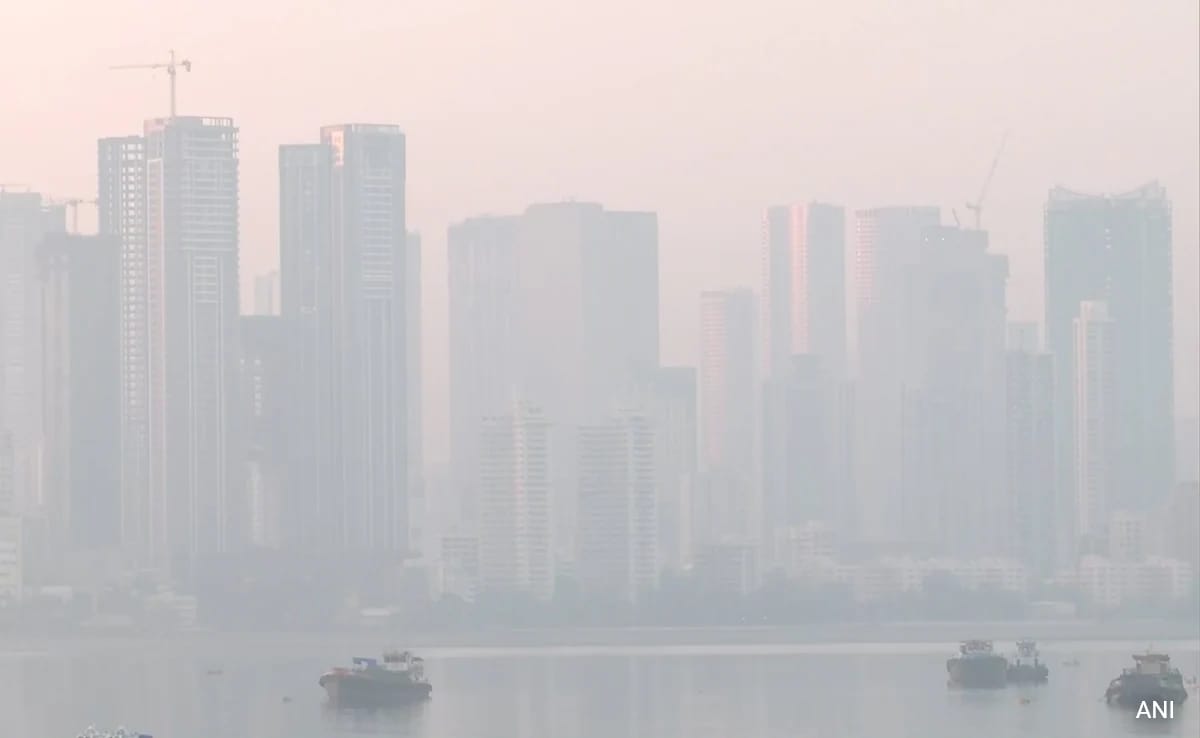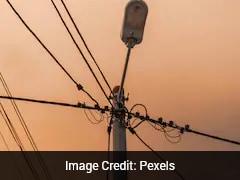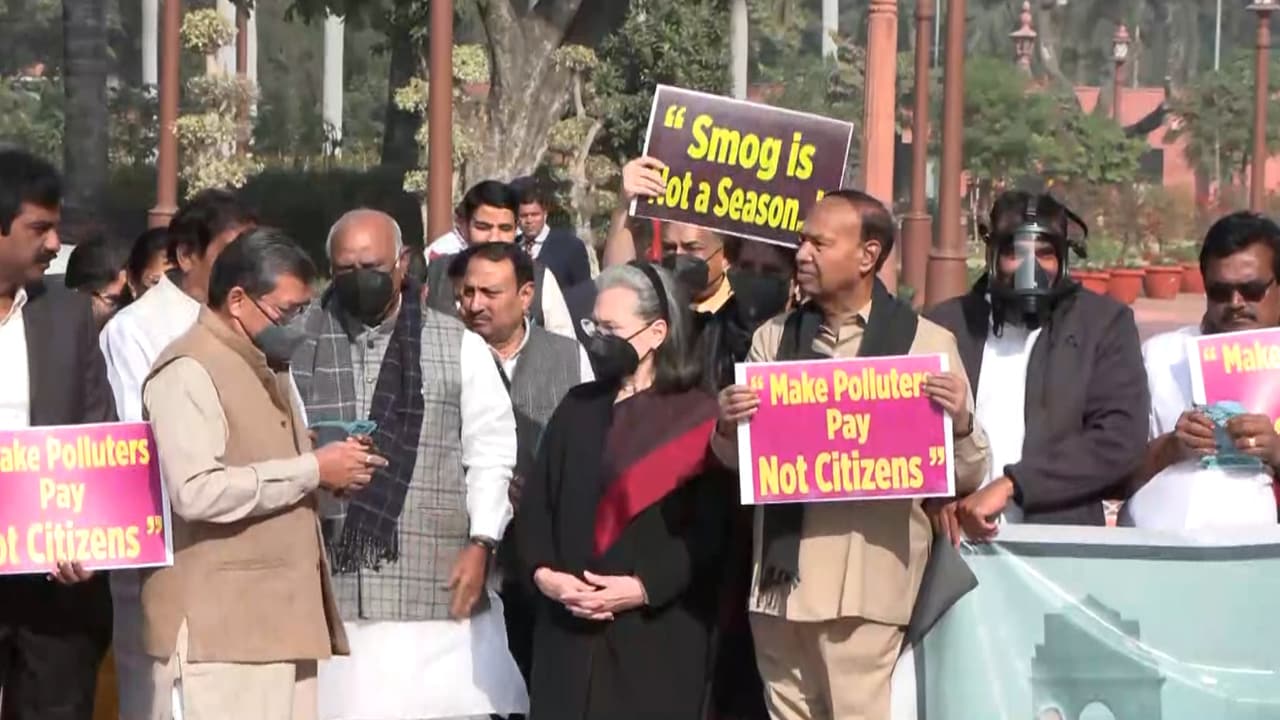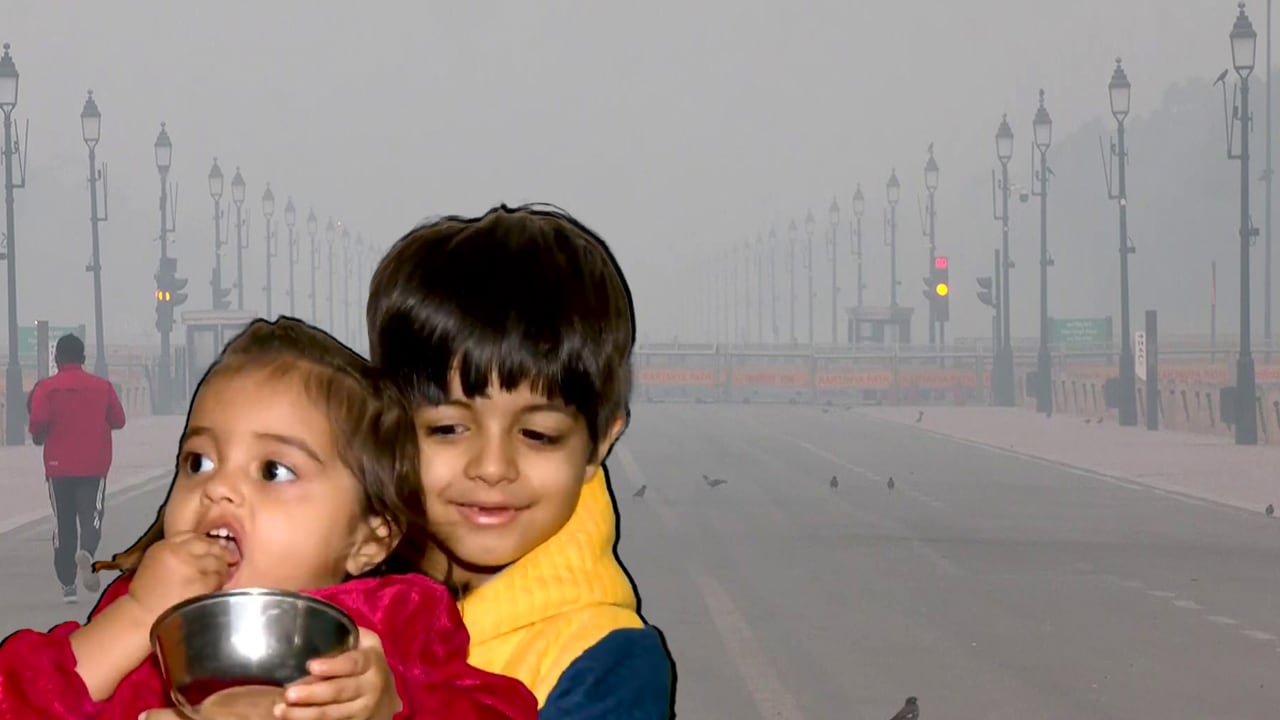- Home/
- Festive Season Chokes Mumbai As October Becomes Most Polluted Month In 2025
Festive Season Chokes Mumbai As October Becomes Most Polluted Month In 2025

Pollution level in Mumbai has spiked sharply, making October the most polluted month of the year so far, according to an analysis done by an independent research organisation.
The analysis shared by the Centre for Research on Energy and Clean Air (CREA) on Wednesday highlighted that between October 18 and 22, as many as 19 monitoring stations in Mumbai recorded their highest daily average PM2.5 levels, while seven registered their peak PM10 levels since January.
CREA made this analysis on the basis of data compiled from the Central Pollution Control Board's (CPCB) monitoring stations.
"October 2025 stands out as Mumbai's most polluted month so far this year, with air quality levels peaking across several parts of the city. Between October 18 and 22, as many as 19 stations recorded their highest daily PM2.5 levels and seven stations their peak PM10 levels since January," said Manoj Kumar, an analyst at the research organisation.
With the festive season in full swing, the financial capital's air quality has deteriorated further, exposing residents to unhealthy pollution levels, and while celebrations draw more people outdoors, the air remains unsafe to breathe, he noted.
"It's crucial for authorities to address not just seasonal pollution spikes but also everyday sources like construction dust, traffic emissions, and other contributors that steadily degrade air quality. Protecting public health must remain at the heart of the city's response," maintained Kumar.
In the metropolis, air quality is tracked by Continuous Ambient Air Quality Monitoring Stations (CAAQMS) operated by the Maharashtra Pollution Control Board (MPCB), the Indian Institute of Tropical Meteorology (IITM), and the Brihanmumbai Municipal Corporation (BMC).
As per CPCB standards, the permissible limit for PM10 is 100 micrograms per cubic metre for a 24-hour average, while PM2.5 should not exceed 60 micrograms per cubic metre.
Fine particles like PM2.5 and PM10 -- primarily originating from vehicular emissions, construction activities, and open burning -- remain the main pollutants affecting Mumbai's air, a CREA statement said.
Persistently high concentrations of PM10 and PM2.5 pose serious health threats, especially to vulnerable populations like children, the elderly, and those with pre-existing medical conditions. Long-term exposure increases the risk of respiratory illnesses, cardiovascular diseases, and cancer, the statement cautioned.
Particulate matter (PM) levels in the air, measured by their size, are used to indicate air quality. The term PM generally refers to a combination of solid particles and liquid droplets found in the air.
(Except for the headline, this story has not been edited by NDTV staff and is published from a syndicated feed.)
Latest Stories
- Press Trust of India | Monday December 08, 2025 , New Delhi
Delhi's air quality remained locked in the 'very poor' category on Monday, with the air quality index (AQI) staying above 300, while forecasts suggest that pollution levels are likely to deteriorate further.
- Reported by Ashwine Kumar Singh | Monday December 08, 2025 , New Delhi
Delhi Chief Minister Rekha Gupta's remarks about the government using mist sprayers to contain pollution at hotspots has drawn a stinging response from her predecessor Arvind Kejriwal.
- Written by Rupashi Chhabra | Monday December 08, 2025
Maintaining lung health is essential for longevity. Here are five simple steps to perform an anti-pollution lung detox for long-term well-being.
- Edited by Astitva Raj | Sunday December 07, 2025
His post clearly explains the various daily challenges he faced after moving to India from Ireland.
- Edited by Srishti Singh Sisodia | Sunday December 07, 2025
These cities serve as examples of how natural surroundings and effective pollution control can contribute to cleaner air.
................................ Advertisement ................................
Latest Videos
Opinion
Blog | Well Done, Delhi. You've Turned Lung Sacrifice Into A Badge Of HonourSaikat Kumar Bose
Monday November 10, 2025Till some years back, Delhiites would ask angry questions to those in power about the capitals annual tryst with toxic air. This has changed. Those in the driving seat dont see the need to answer now.
Opinion | Why Indians Have Just Given Up On Air Pollution CrisisTanushree Ganguly
Friday December 20, 2024While some may argue that people in Delhi are now more aware of air pollution than they were a decade back, my rebuttal would be that awareness does not mean that people are concerned.
Opinion | You Must Outrage Over Filthy Air More Than Once A YearJyoti Pande Lavakare
Tuesday December 10, 2024Delhi welcomed us with monsoon rains and mangos. We were home. Fast forward a couple of years, in the winter of 2012, I found myself in denial about something other parents, mostly expats, were calling toxic air.
Opinion | Delhi's Air Pollution Situation Is Like A Bad MarriageNishtha Gautam
Friday November 22, 2024On a good day, such as today, the AQI reading in Delhi is 407. We are jubilant at the sickly sunshine trickling through the slightly dissipated smog. At least its not 1600.
दिवाली... पराली... सियासी जुगाली!Ashwini kumar
Monday November 18, 2024दिल्ली-एनसीआर में प्रदूषण का समाधान तो आज तक मिला नहीं. हर साल चिंतित होकर हम-आप सांसों की तकलीफ के साथ-साथ दिल और ब्लड प्रेशर के मरीज भी क्यों बनें?


















